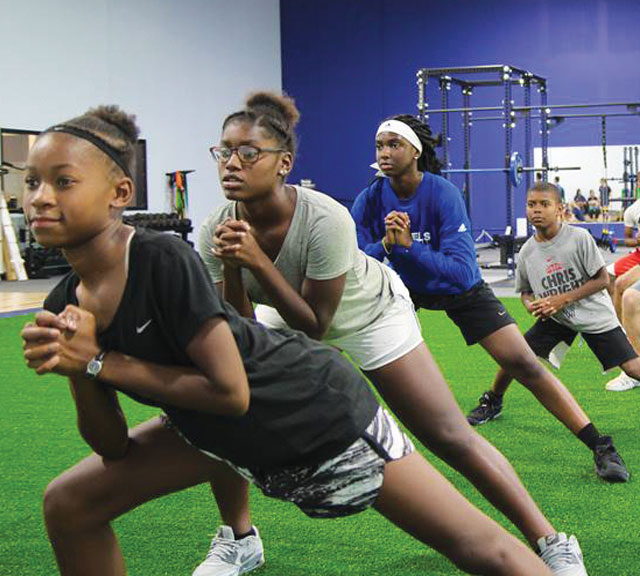Playing It Safe: Preventing Youth Sports Injuries

Answer a few questions and we'll provide you with a list of primary care providers that best fit your needs.
Is one or more of the youngsters in your life involved in sports? If so, good for them! Participating in sports not only helps keep young people fit and healthy, it can also help them grow in confidence and self-discipline, improve their coordination, and experience firsthand the importance and value of working as part of a team. But as every athlete knows, along with the benefits and pleasures of an active, sports-oriented lifestyle comes the risk of injury. And young athletes are at even greater risk than adults because their still-growing muscles, bones, tendons, and ligaments are more prone to injury.
In the past couple of decades, youth sports injuries have been on the rise. More children than ever are now participating in athletics, and there is speculation that accelerated training regimens may be contributing to the increase in injuries. Learn what you can do to help your young folks enjoy their sports safely.
Common Injuries
Two broad categories of injuries are common among young athletes.
Acute injuries are the fractures, sprains, bruises and cuts that can result from sudden trauma — as in a fall, collision, sudden twisting of the leg, etc. After such an injury, the coach and parents should apply necessary first aid and seek medical treatment for the injured child.
Overuse injuries, as the name implies, are those caused by the frequent, repetitive use of particular parts of the body. They show up gradually over time and are usually the result of continued activity without taking enough time to heal between games or workout sessions. They include problems like throwing injuries, tendonitis, shin splints, and others. Overuse injuries account for half of all sports-related injuries in children and teens.
And young athletes are at even greater risk than adults because their still-growing muscles, bones, tendons, and ligaments are more prone to injury.
The Stress Fracture

A stress fracture is a common type of overuse injury. When muscles tire from continual use, some of the burden of absorbing the impact and stress of exercise is transferred to the bones, which, under the strain, can develop small breaks called stress fractures. They can develop when a young athlete:
- Is wearing equipment that fits poorly or doesn’t offer enough support
- Suddenly gets more playing time than usual
- Doesn’t get sufficient rest between workouts or games
- Increases the frequency or intensity of workouts too quickly
- Begins playing or working out on a new surface
How Can I Help Prevent Injuries?
Reducing the risk of youth sport-related injuries requires a multi-point approach involving parents, coaches and the child. Strategies include:
- Having a full physical exam before participating in sports
- Eating a good, healthy diet that’s rich in calcium and vitamin D (for strong bones)
- Drinking plenty of fluids at practice and during games
- Participating in conditioning training prior to playing in competition
- Not specializing in one sport before late adolescence, and playing only one sport, on one team, per season
- Warming up thoroughly before practice and competition, and cooling down afterward
- Participating in cross-training — that is, alternating training routines to avoid overworking one area of the body
- Not “playing through the pain,” which could be the sign of an overuse injury
Jeffrey James, DO, of Premier Orthopedics shares more on the wisdom of encouraging young people to play multiple sports and the long-term effects of overuse injuries.
He explains why it’s better for kids to play multiple sports instead of specializing in just one sport.
Click play to watch the video or read video transcript.
Are there long-term consequences from overuse injuries? Dr. James explains.
Click play to watch the video or read video transcript.
Be sure your child’s coaches know the signs of stress fracture, which can be harder to spot than the effects of a more acute injury. No matter the cause of the injury, any child who complains of pain that doesn’t go away or that affects their sports performance should be seen by a health care provider.
Answer a few questions and we'll provide you with a list of primary care providers that best fit your needs.
Source: Jeffrey James, DO, Sports Medicine, Premier Orthopedics; American Academy of Pediatrics; American Academy of Orthopedic Surgeons







